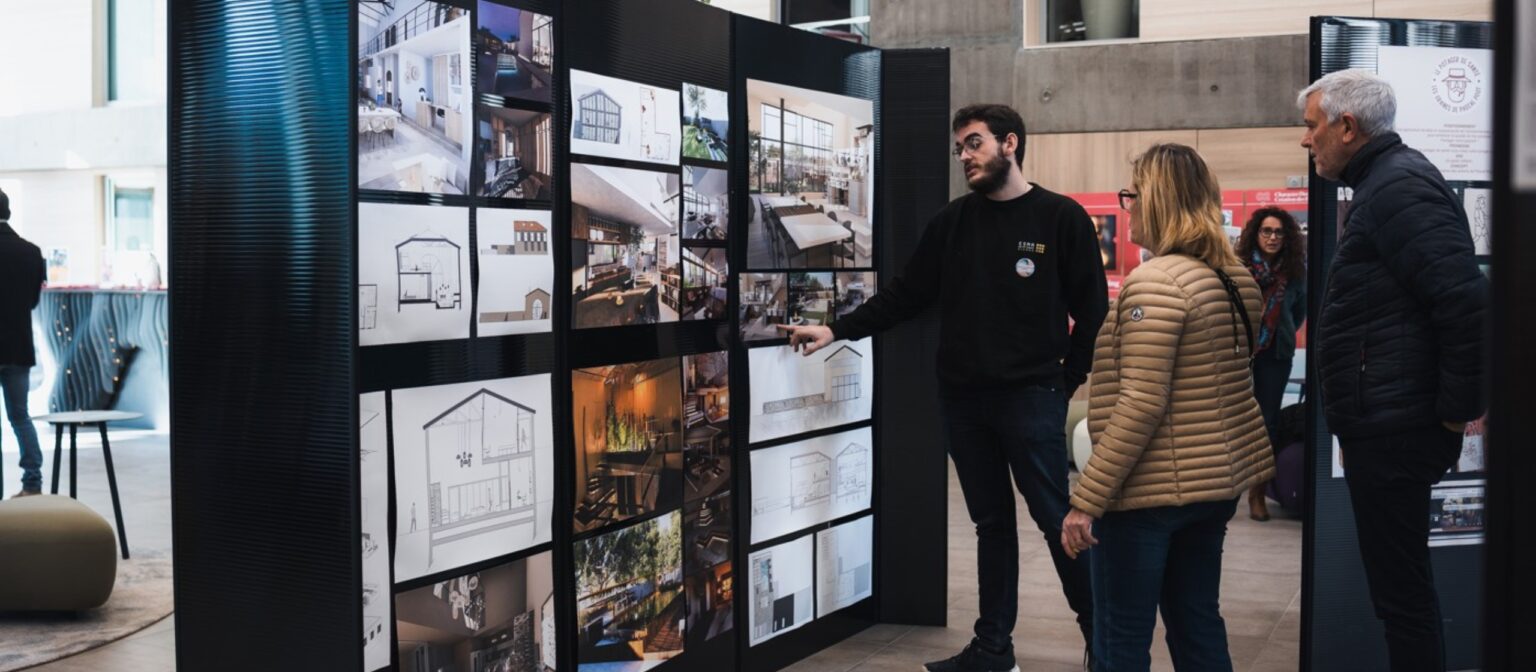
- Published 06.10.2025
- type Thematic news items
- Training Interior Architecture
Summarize with:
A demanding but meaningful sector
While the building and property sector has experienced some recent turbulence (slowdown in new construction, rise in the cost of materials, transformation of uses post-COVID), interior architecture is holding its own thanks to its ability to adapt and the growing diversification of its outlets.
There are an estimated 12,000 interior designers working in France, nearly 70% of whom are self-employed. The overall interior design market (interior architecture, layout, space design) will be worth more than €3.5 billion by 2023, with average annual growth estimated at between 2 and 4% (source: UNAID, Xerfi, BPI France).
Over 55% of the projects entrusted to these professionals today involve interior renovation, a figure that is rising steadily. Homes, hotels, shops, hybrid workspaces and cultural venues are all rethinking their uses – and calling for new skills.
In this context, the interior architect is becoming a key player in the transformation of everyday spaces, at the crossroads of creativity, technique and mastery of use.
The training offered at ESMA is fully in line with this dynamic: teaching that combines high artistic standards, technical rigour and practical preparation for the real world.
Professional training geared towards practical design
From the very first years, students are immersed in an active teaching approach, with design projects, group workshops and theoretical reflections on the uses of space. Learning is based on experimentation: volumes, light, circulation, materials, ergonomics – everything is put in tension to design living spaces that are adapted to their users.
Over the five years of training, students gradually develop the artistic, technical and methodological skills they need to practise their profession. The 4th and 5th years, which will be offered from 2025 onwards as part of a sandwich course or as an initial course with intensive work placements, will strengthen this link with the real world of work, with a gradual immersion approach.
The RNCP level 7 certification (Bac 5) officially recognises this increase in skills, highlighting the value of a profession that often straddles the boundary between creation, engineering and project management.
Individual and technological support
ESMA provides personalised support throughout the course: educational support, building a career plan, developing cross-disciplinary skills (communication, stress management, autonomy).
This support is complemented by the Bloom programme, which combines workshops, mentoring and professional simulations to enable each student to project themselves into the diversity of the planning professions.
The LAB: another tool for thinking outside the box
As well as acquiring technical and creative skills, ESMA encourages its students to become curious, committed professionals, capable of taking a step back from their practice and their environment.
With this in mind, they can benefit from an additional tool: the LAB, a research laboratory initiated by the Creative Schools network (ESMA, ETPA, CinéCréatis, Pivaut, IFFDEC).
This place of emulation brings together teachers, professionals and researchers around major contemporary issues: ecology, inclusion, technological innovation. With its strong roots in the creative industries, it offers students lectures, workshops and collaborative projects to help them sharpen their eyes, question practices and develop critical thinking about the world around them.
In short, it’s another string to their bow, supporting their personal development and nurturing their ability to make conscious, lucid and responsible choices in their future careers.
A wide range of outlets in a broader professional field
The interior design profession covers a wide range of functions, depending on the type of structure, client or sector.
Our graduates work in :
- Interior design or global architecture firms;
- Technical or project management consultancies;
- Design, retail or scenography agencies;
- Major brands (distribution, hotels, real estate, etc.);
- Companies in the cultural or events sector.
Jobs available :
- Interior architect
- Space designer / Scenic designer
- Interior design project manager
- Design office manager
- Interior architecture project manager
- Project manager for retail, museography, hotels, etc.
Some graduates also choose to set up as freelancers, often after a few years’ experience in an agency.
Solid entry figures, driven by a changing profession
| Year of certification | Number of graduates | Overall integration rate at 6 months (%) | Rate of entry into the target occupation after 6 months (in %) | Rate of entry into the target occupation after 2 years (in %) |
| 2022 | 37 | 90 | 68 | 66 |
| 2021 | 29 | 84 | 72 | 78 |
These figures reflect a very good overall integration rate, close to or above 90%, and gradual professionalisation towards the target professions.
Young graduates sometimes start out as collaborators or assistant project managers, but quickly move on to more autonomous positions as their portfolio and experience develop.
Conclusion: a cross-disciplinary profession at the crossroads of creation and use
By training creative, technical and reflective interior architects, ESMA prepares its students to work in a complex but profoundly stimulating sector.
At the crossroads of the city, housing, design, culture and technology, this profession responds to increasingly high expectations in terms of quality of life, ecological transition and use value.




